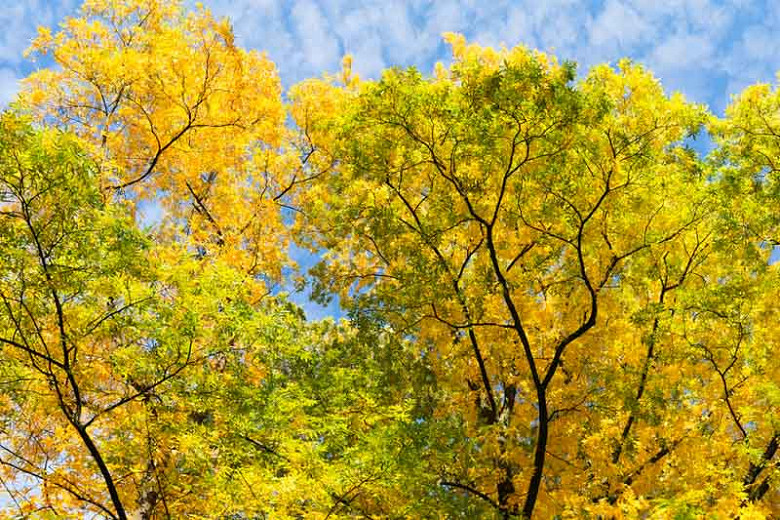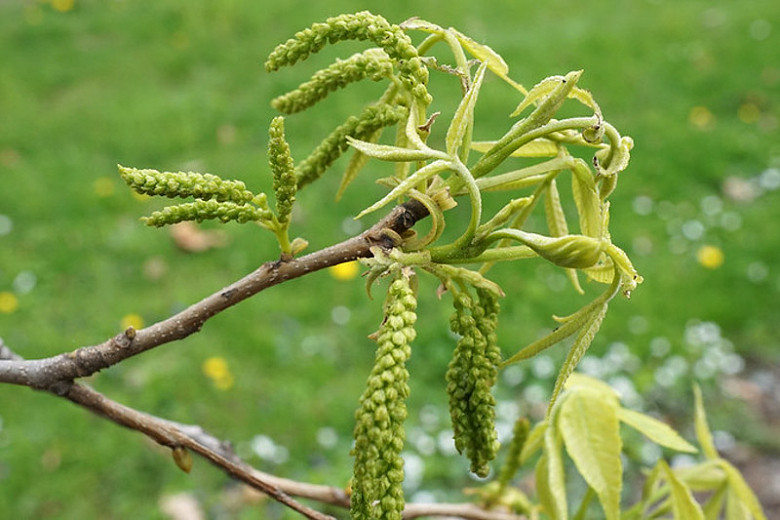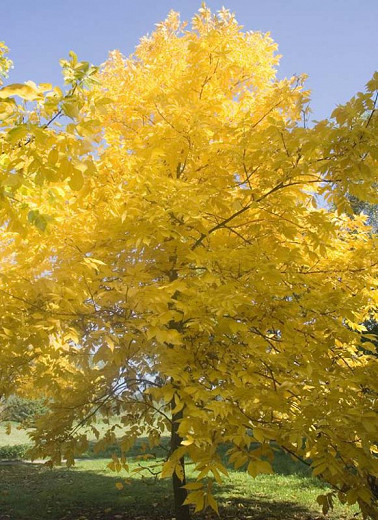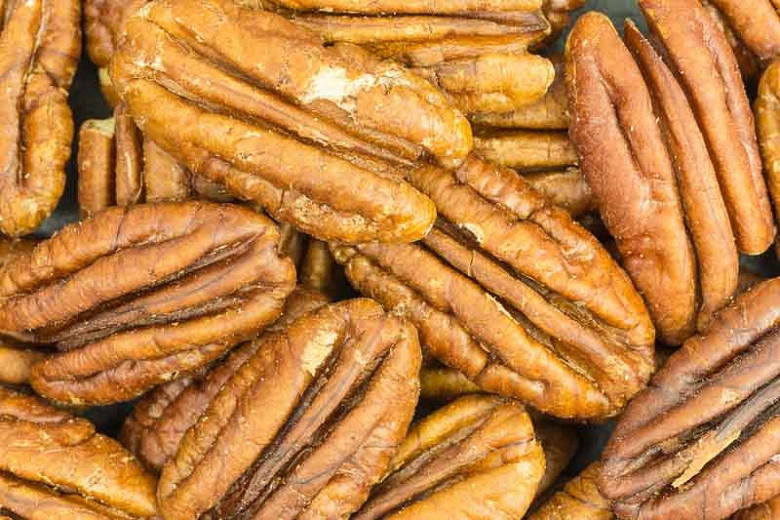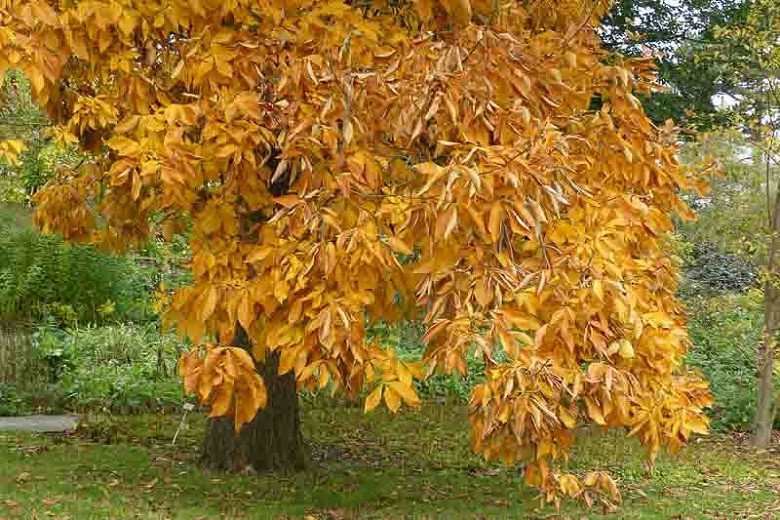Carya cordiformis (Bitternut Hickory)
One of the largest hickories, Carya cordiformis (Bitternut Hickory) is a medium to large deciduous tree of broadly columnar habit with an irregular, oval-rounded crown and a long branch-free trunk. Its gray-brown bark is shallowly furrowed. The stiff, ascending branches are clothed with long, slender, light to medium green leaves, 6-12 in. (15-30 cm), each leaf having 5-9 ovate leaflets. They turn bright yellow in the fall. Several species of beautiful moth are attracted to the foliage. Inconspicuous greenish yellow flowers appear in spring, the male flowers in long, graceful catkins and the female flowers in short spikes. The female flowers are followed by bitter hard-shelled nuts. Bitternut Hickory fruit is generally considered unpalatable to wildlife and supposedly even the squirrels tend to avoid them. Bitternut Hickory is the shortest lived of the hickories, living to about 200 years. This ornamental tree casts an open shade that allows grass or ornamentals to thrive underneath.
- Grows up to 50-80 ft. tall (15-24 m) and 30-50 ft. wide (9-15 m).
- Performs best in full sun to part shade in humusy, rich, moist to wet, well-drained soils.
- No routine pruning necessary. Remove diseased, damaged, congested or crossing shoots.
- No serious pest or disease issues. Keep an eye out for crown gall, powdery mildews and leaf spot.
- Propagate by seed sown in situ as soon as ripe; seedlings rapidly develop a deep tap root and resent transplanting.
- Native to eastern North America.
Requirements
| Hardiness | 4 – 9 |
|---|---|
| Heat Zones | 1 – 9 |
| Plant Type | Trees |
| Plant Family | Carya – Hickories |
| Exposure | Full Sun, Partial Sun |
| Season of Interest | Spring (Mid,Late)Summer (Early,Mid,Late)Fall |
| Height | 50' – 80' (15m – 24m) |
| Spread | 30' – 50' (9m – 15m) |
| Water Needs | Average |
| Maintenance | Low |
| Soil Type | Chalk, Loam, Sand |
| Soil pH | Acid, Alkaline, Neutral |
| Soil Drainage | Moist but Well-Drained |
| Characteristics | Showy, Fruit & Berries |
| Native Plants | United States, Midwest, Illinois, Indiana, Iowa, Kansas, Michigan, Minnesota, Missouri, Nebraska, Ohio, Wisconsin, Northeast, Connecticut, Delaware, Maine, Massachusetts, Maryland, New Hampshire, New Jersey, New York, Pennsylvania, Rhode Island, Vermont, Southeast, Alabama, Arkansas, Florida, Georgia, Kentucky, Louisiana, Mississippi, North Carolina, South Carolina, Tennessee, Virginia, West Virginia, Southwest, Oklahoma, Texas |
| Attracts | Birds, Butterflies |
| Garden Styles | Prairie and Meadow |
